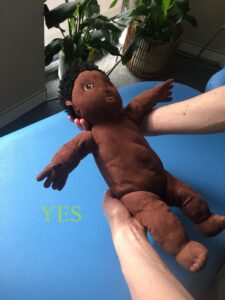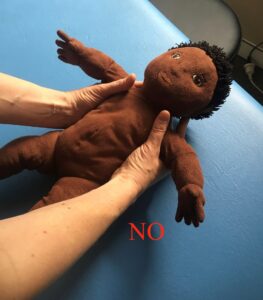Of the many surprises that having a baby can bring, wrist and hand pain is a common complaint amongst new mums. This is thanks to your new bundle of joy and the extra work and repetitive tasks of lifting, holding and settling that come along with caring for your new baby.
Two of the most common conditions that women experience during and after their pregnancy are Carpal Tunnel Syndrome and De Quervain’s Tenosynovitis. In fact, they are so common that they are often referred to as “Mum’s wrist” and “Mum’s thumb”.
Carpal Tunnel Syndrome
Carpal Tunnel Syndrome (CTS) is when the median nerve, which runs from your neck down to your fingers, is compressed as it passes through the carpal tunnel at your wrist. When the nerve is compressed, it can cause pain, numbness and tingling in the hand and fingers and can make the hand feel weak. It is more common in pregnancy but persists for 10% of mums after they’ve given birth. The most likely cause is due to swelling and fluid retention due to the hormonal and postural changes associated with pregnancy.
5 tips for managing CTS:
- Apply an ice pack to reduce inflammation and swelling.
- Gently shaking the hands can relieve symptoms, especially at night.
- A wrist splint can help to position the wrist and hand correctly to relieve symptoms, especially useful when worn at night.
- Choose breastfeeding positions where possible where your baby’s head and body is supported by your body and whole arm, rather than holding the weight of your baby’s head in your wrist and hand. Babywearing can also help to reduce the strain on your wrists when holding your baby.
- Seek help early. Osteopaths can help with joint mobility and optimising circulation and provide advice on exercises and symptom management specific to you.
De Quervain’s Tenosynovitis
De Quervain’s Tenosynovitis (DQT) is a condition producing pain around the thumb due to inflammation of the tendon sheath surrounding the tendons that move the thumb. You might experience tingling, numbness or a burning sensation in the wrist and thumb and pain can radiate into the forearm also. The pain will often worsen when making a fist or gripping with the wrist and hand and you may also experience a clicking or catching sensation.
It commonly starts in the first few weeks after giving birth, largely due to the repetitive movements of lifting and holding babies, burping babies and lifting heavy items such as car seats and strollers.
5 tips for managing DQT:
- There are different ways to lift and hold babies that reduce the pressure on the wrist and thumb, decreasing the strain (photos). Where possible, get your partner to do the heavy lifting to allow your wrists to rest.
- Choose breastfeeding positions where possible where your baby’s head and body is supported by your body and whole arm, rather than holding the weight of your baby’s head in your wrist and hand. Babywearing can also help to reduce the strain on your wrists when holding your baby.
- Rest your wrist and apply an ice pack or ice massage frequently.
- Be mindful of how you hold and use your phone. Taking the weight of the phone in your wrist and texting with your thumb can irritate already inflamed tendons.
- A splint that immobilises the thumb can help to reduce strain and inflammation, especially when used early.


Osteopaths can diagnose these conditions and assess the best way to manage them, including whether other joints and muscles in your arm, neck and back are contributing to pain in your wrist and hand. Early management is often the key to prevent little issues from becoming big ones, so seek help early!

